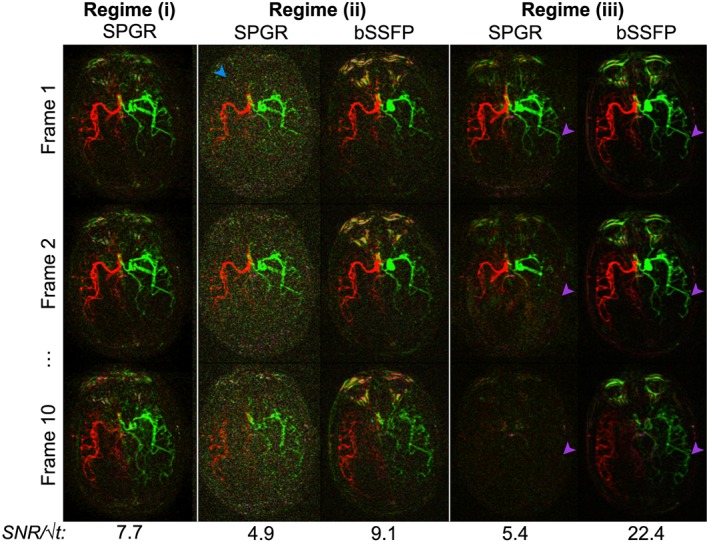Figure 3.

Selected frames from an experimental comparison of bSSFP and SPGR in the same subject using dynamic 2D mode without inflow subtraction. Three regimes are shown here, matching the simulations shown in Figure 2, with flip angle/T R/acquisition time approximately equal to (i) 8°/12 ms/5 min, (ii) 5°/4 ms/1.5 min, and (iii) 20°/4 ms/1.5 min. Note that bSSFP data were acquired with twice the SPGR flip angle (as per Fig. 2) but cannot be acquired in Regime (i) because the long T R would lead to significant banding artifacts. SNR efficiencies are displayed below each set of images. Good quality SPGR data can be acquired in Regime (i), but accelerating the acquisition by reducing the T R and the flip angle leads to poor SNR (blue arrowhead) in Regime (ii). bSSFP data acquired in Regime (ii) are comparable to those of SPGR in terms of signal attenuation, but because no spoiler is required at the end of each T R period a lower bandwidth could be used, yielding higher SNR images. Attempting to recover some SNR by increasing the flip angle in Regime (iii) leads to rapid signal loss for SPGR, but not bSSFP (purple arrowheads). Note that the signal loss in proximal vessels is less severe due to the inflow of fresh labeled blood, which has not experienced all the previous RF excitation pulses.
